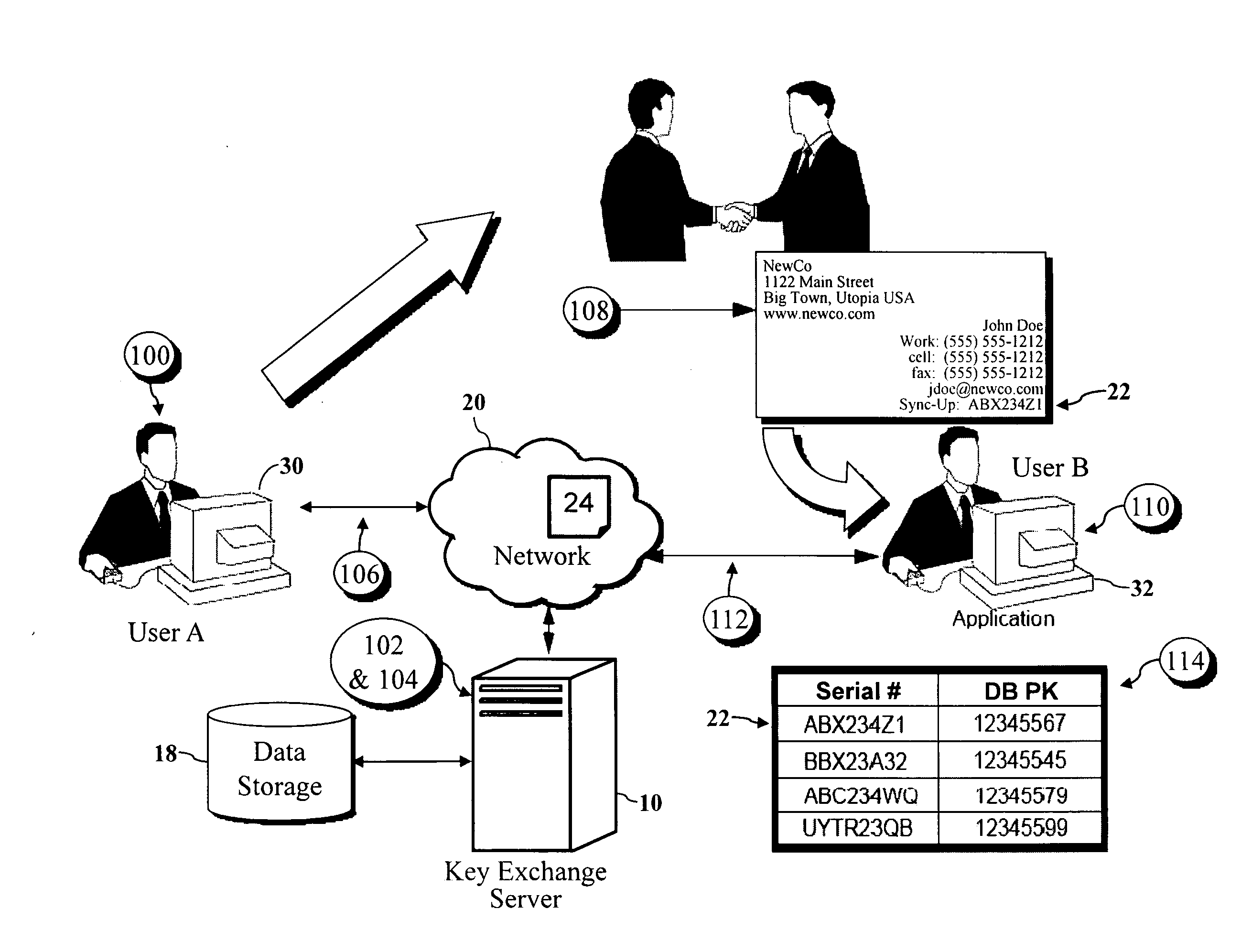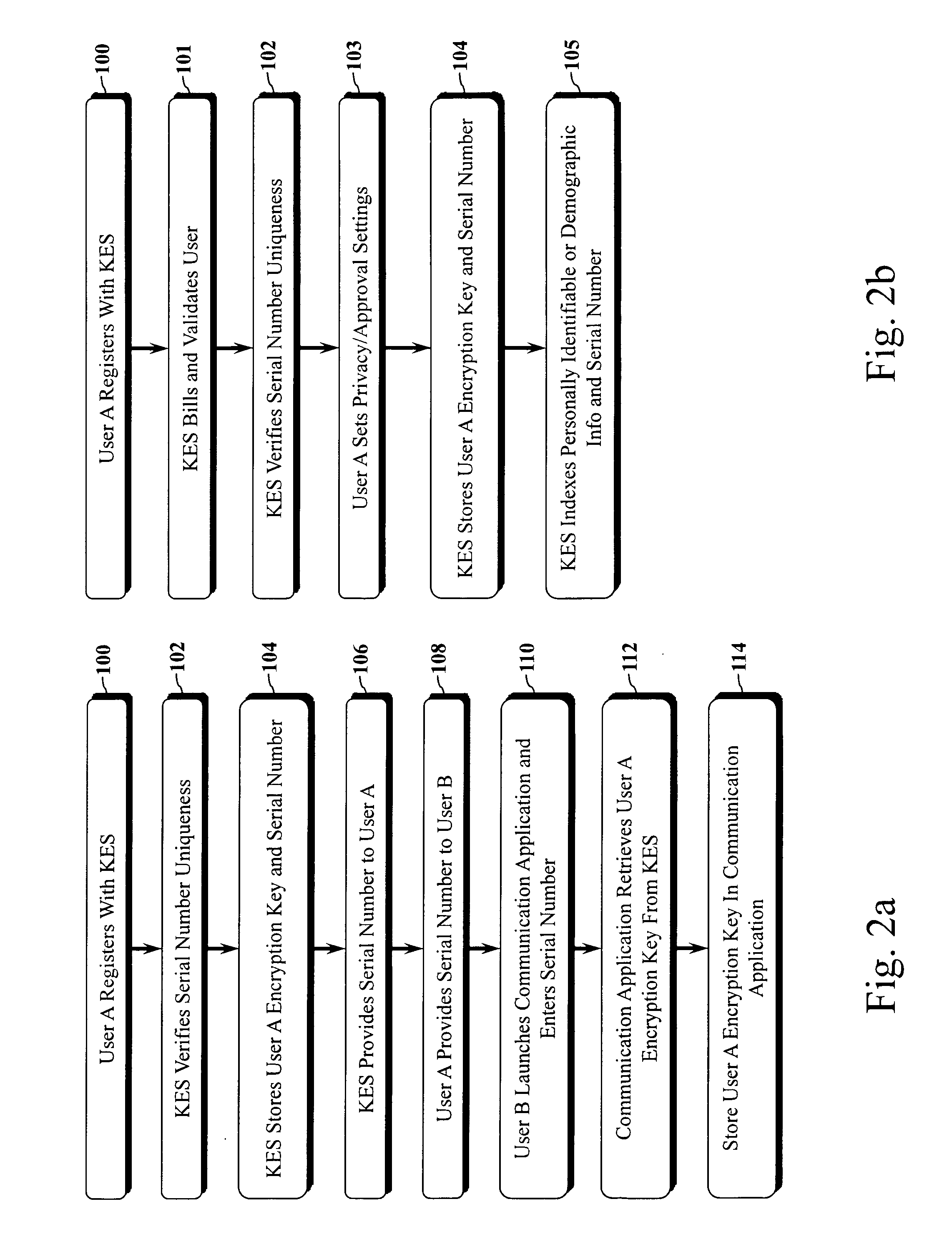Since PKI uses so-called asymmetric keys—a public key and a private key—the concept is challenging for non-technical individuals to understand.
Conceptually, this is difficult for non-technical individuals to grasp.
Operationally, it is difficult to configure and use.
These processes can be expensive,
time consuming and cumbersome, which discourages people from adopting digital IDs for email and for signing contracts.
However, people have not adopted these solutions en masse largely due to the cumbersome nature of
key exchange and
key management.
Yet, there is no
common key exchange method like SSL / TLS or SSH that makes the process seamless or simple enough for ordinary persons.
However, it is not customary for ordinary individuals without a significant technical background to exchange encryption keys using non-electronic means of exchange.
Strong encryption keys are typically lengthy and cryptic, so people do not write them down, print them, or type them into computer systems.
This fact makes the non-electronic exchange of strong encryption keys excessively burdensome.
Consequently, ordinary people eschew available encryption technologies.
Prior art encryption
key exchange solutions include key servers (e.g., OpenPGP, LDAP, X.500, etc.); however, these key servers have numerous drawbacks: first, while a non-secure public encryption key was historically considered a virtue overcoming the key exchange problem (i.e., Diffie-Hellman), a person disseminating his or her encryption key may not wish to allow any person who wants the public key to receive it.
Most key servers allow a person to publish their public key to a
key server, but they do not typically
restrict access to the key or allow the key owner to approve requests for the key.
One significant problem with unrestricted access to a public key used for encryption is that spammers,
virus propagators and others can encrypt email using the public key and bypass spam,
virus,
malware and other filters.
Second, encryption keys exchanged over key servers are often bound to a particular
email address, which compounds the problem of people changing their email addresses frequently, or using more than one
email address or the same
email address with numerous devices (e.g., mobile phones such as RIM Blackberry or Microsoft Outlook for Mobile).
Third, keys may be compromised and subsequently revoked by the user.
Encryption key servers do not usually make it easy to update people who previously requested the encryption key for the purposes of key rotation.
Fourth, some encryption applications search for encryption keys at key servers prior to sending an
electronic communication when the application does not have an encryption key for the destination.
This means of ‘key discovery’ is intended to help a person build their
address book or ‘key ring’ of encryption keys, but it may slow an application down substantially, so users often turn these features off—thwarting the widespread adoption of encryption solutions.
Prior art leaves non-technical individuals exposed to the complexities of key exchange and
key management, and this
exposure reduces the likelihood that people will adopt encryption solutions when transmitting sensitive information over
the internet.
Joel F. Brenner, the U.S. National Counterintelligence Executive, gave a speech to the 4th Annual Multi-INT Conference and said the following, “And dealing with our workforce's relentless demand for convenience, and its impatience with reasonable security requirements—that's a behavior problem.
Email is an area with significant security risks.
Today, people still exchange email primarily in unencrypted form, and the consequences are substantial.
Unencrypted and unsigned email leaves people vulnerable to privacy violations, the theft of
intellectual property and fraud.
So recipients cannot verify the identity of the purported sender.
People using email to communicate with others frequently receive unwanted email (called spam).
Spam can involve unsolicited marketing offers that overflow a user's inbox and thereby reduce the utility of email.
Spam can also be malicious in that it is intended to fool the user as to the identity of the sender and the
system from which the email was allegedly sent.
Unfortunately email fraud (often called ‘
phishing’) can use SPF and DomainKeys.
These technologies do not stop fraudulent email; they stop misrepresentation of the message's originating domain.
However, SMTP-AUTH, SPF, DomainKeys and SEFAP still cannot not detect that the message is fraudulent before it is transmitted to the recipient.
Since DNS hacking has become a significant problem, even publishing a public encryption key on a DNS
server for use with DomainKeys involves some risks.
In U.S. Pat. No. 6,986,049, Delany acknowledged this risk stating, “Using the DNS could present a security risk because the DNS itself is currently vulnerable.” These security risks also apply to SPF, which is computationally less expensive than DomainKeys (i.e., it verifies the
IP address of the sending domain).
Major organizations have no generally effective means of knowing which recipients have the ability to decrypt a signed message with a public encryption key (i.e., when the clear
text message isn't included) or an encrypted message with a private key, so organizations continue to send unsigned (unauthenticated) and unencrypted (clear text) email.
One reason that verifying sender domains is insufficient is that fraud perpetrators are able to copy and utilize the
Cascading Style Sheets (CSS) and
graphics of major organizations such as banks to impersonate their identity—inducing unsuspecting people who believe they are communicating with a trusted major public institution into providing identity,
authentication and other information.
Analysts estimate that these email-induced ‘
phishing’ scams result in over a billion dollars in losses per year ($3.2B in 2007, $1.7B in 2008 according to Gartner Group) in the US alone.
In such cases, the perpetrator may remain logged in or return to the site at a later time, for example, to track financial information of competitors, to write unauthorized checks or send unauthorized
bank wires from an online banking site, or to learn about the health conditions of a particular person, among other unauthorized uses of secure information.
Phishing attacks have used the foregoing techniques to spoof supposedly secure two-factor
authentication solutions employed by business banking sites, which has led to unauthorized
bank wires of hundreds of thousands of dollars from both public and private institutions.
If email messages were strongly authenticated, this practice could be curtailed significantly.
Solutions like
Voltage and IronPort PXE hide encryption technology, but it can be cumbersome to use (see U.S. Pat. Nos. 6,014,688 and 6,304,897).
Disadvantages of such solutions include the fact that the recipient must save the attachment to a file, use a browser to present the message, must login to retrieve a decryption key for each message, and must develop a means of archiving messages for regulatory compliance (e.g., Sarbanes Oxley, Graham Leach Bliley, HIPAA, etc.) since the message itself will not reside in an ‘inbox’ in unencrypted form, and must be willing to accept email attachments including
embedded applications (i.e., some firewalls may block messages for fear of
malware).
While the IronPort PXE message itself is probably difficult to spoof (i.e., it contains
JavaScript,
Java, and an encrypted message attachment;
JavaScript builds the
client-side representation), it may still be subject to a man-in-the-middle
phishing attack, because the notification email is often sent in clear text without signing it.
Therefore, these solutions may be vulnerable to phishing schemes too, because they allow a person to send an encrypted message to a secure
server for an intended recipient who does not already have a public encryption key.
Such solutions are also subject to phishing attacks when sending notifications.
Despite the ease of use for users of HushMail, and the ability to exchange keys with non-HushMail systems (e.g., OpenPGP), slow adoption and the cumbersome nature of exchanging and managing keys with email users outside of the
system demonstrates a long-felt, but unsolved need to address key exchange and
key management seamlessly for email and other forms of network based communications.
There are several problems with signing a message: first, the organization may need to know if the intended recipient can decrypt the encrypted message if it does not provide a clear
text message too; second, if the recipient doesn't receive the public key out-of-band from a trusted source (e.g., as with IronPort), the user has to verify the authenticity of the key with a
certificate authority, because the inclusion of a public key in a message can be replicated easily by a fraud perpetrator.
This could be due to poor user interfaces.
The application designers do not want to
expose certificates to users at all.” While users are lackadaisical about verifying digital certificates with SSL (probably because cryptic encryption codes are intimidating and difficult to understand), the lack of a
general purpose solution for verifying a signed email using a standard web-based email system from a leading vender (e.g., YahooMail, Hotmail, AOL, GMail, Comcast, etc.) leaves the broader market without a means of positively identifying a trusted sender from torrential flood of spam and fraudulent phishing emails that users receive on a regular basis.
Another major problem preventing the widespread adoption of encryption technology with email and other forms of communication is that different types of users have different types of systems.
This
asymmetry between large organizations with complex enterprise-class applications and users of web-based email and desktop email solutions creates another seemingly insurmountable obstacle to wide spread adoption of encryption technology with email.
While depository institutions and financial services companies have been the primary target of phishing attacks, firms such as PayPal and eBay and their users have been victimized by phishing schemes in substantially higher volumes.
In addition to the shortcomings of this approach to authentication, the Iconix approach requires individuals to install browser plug-ins, which can be inconvenient; using a plug-in to modify or decorate the DOM tree may conflict with solutions that thwart man-in-the-browser attacks by preventing modifications to the DOM tree; the approach involves micropayments, which may impair adoption; and the approach requires retrieving a “stemp” for each message received (i.e., rather than using a public key).
This is another major impediment, since the duplication of effort across enterprises likely precludes medium-sized and smaller firms needing such protection from being able to achieve it with multiple providers at low cost.
These solutions are effective too; however, they generally do not address the problem of an
asymmetry between different organizational sizes.
Key exchange and key rotation become expensive when the number of bi-directional relationships and unique encryption keys increases.
The drawbacks of these SMTPS and STARTTLS solutions include the fact that both the sender and the recipient must have such a device to set up the SSL / TLS connection, which makes it impractical for individuals and small businesses.
Consequently, the slow nature of setting up and taking down secure network connections and the finite number of connections supported by the gateway in a high traffic environment is often too slow or limited to make it practical for large organizations.
However, key exchange has some drawbacks: first, in the OpenPGP paradigm, public keys are published to OpenPGP key servers and are exchanged in unencrypted form each time the intended recipient doesn't have a key within the gateway solution.
A gateway service that doesn't enable person-to-person key exchange via a personalized identifier, approval of requests for an encryption key, and secure exchange of keys is a drawback to adoption.
The process of encryption and decryption may be too computationally intensive for legacy applications (i.e., it may materially adversely affect system performance) and may be too expensive to implement (e.g., adding functionality to mainframes, thus requiring the purchase of more expensive mainframe hardware).
 Login to View More
Login to View More  Login to View More
Login to View More 


